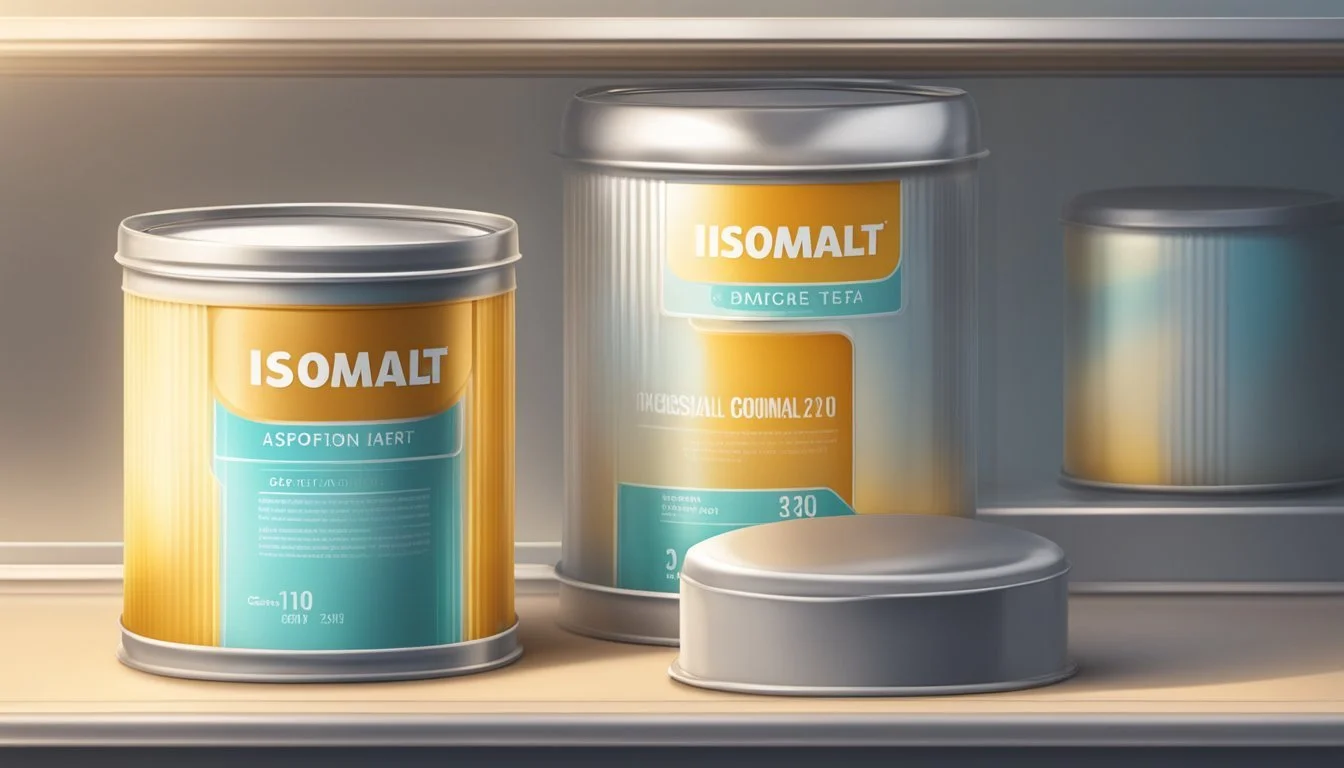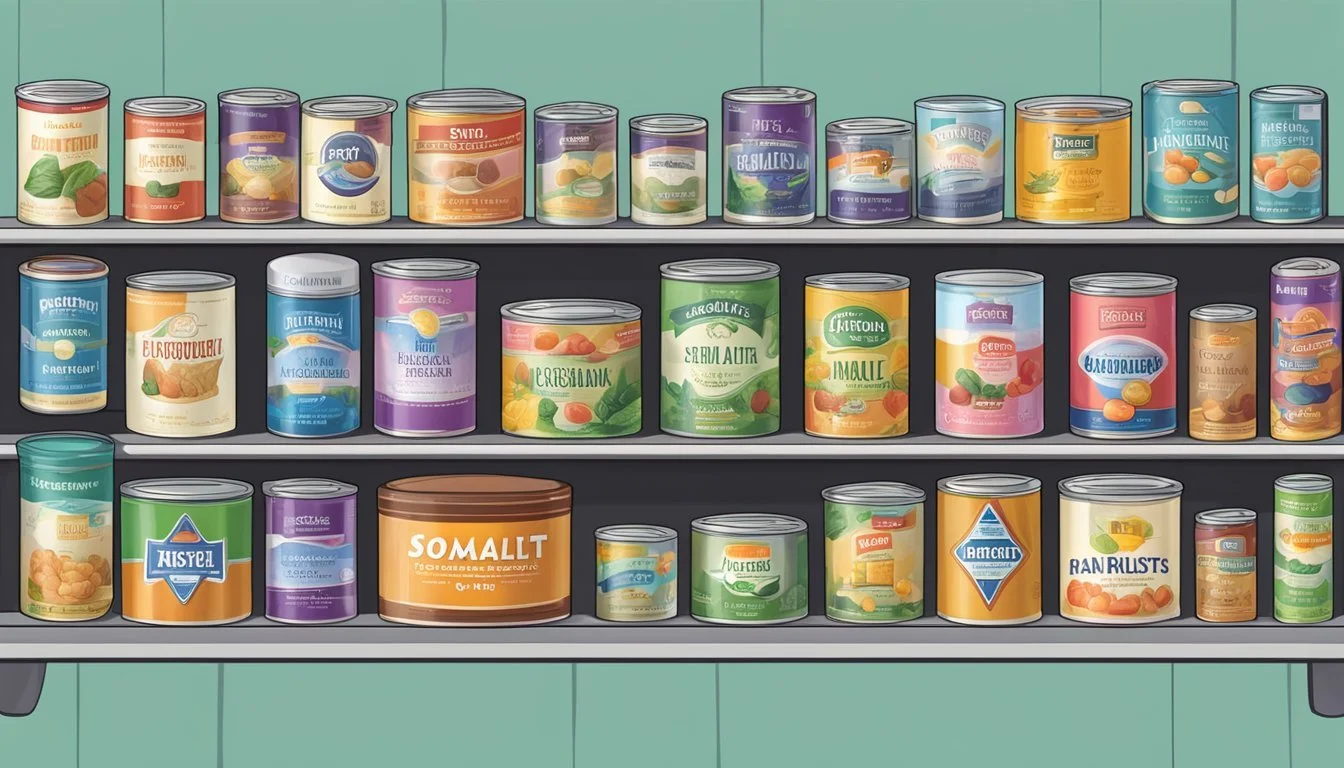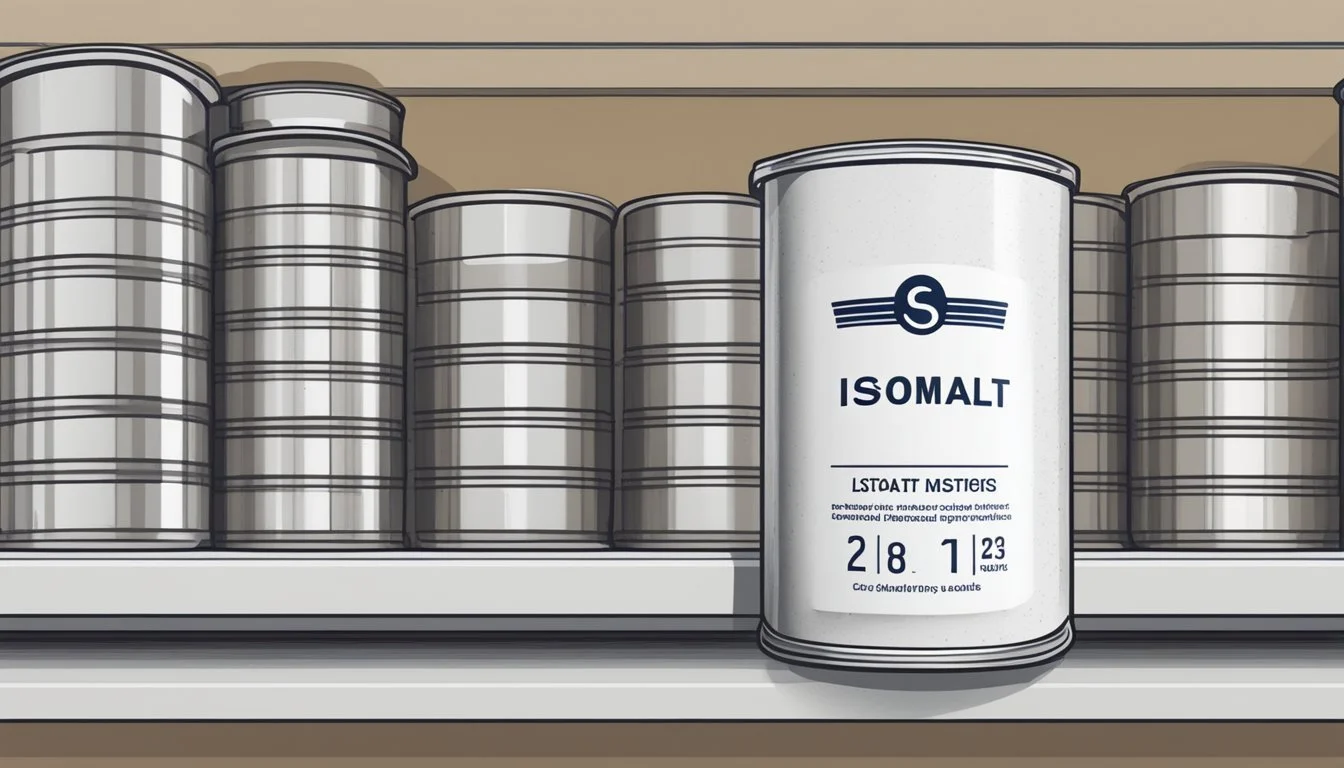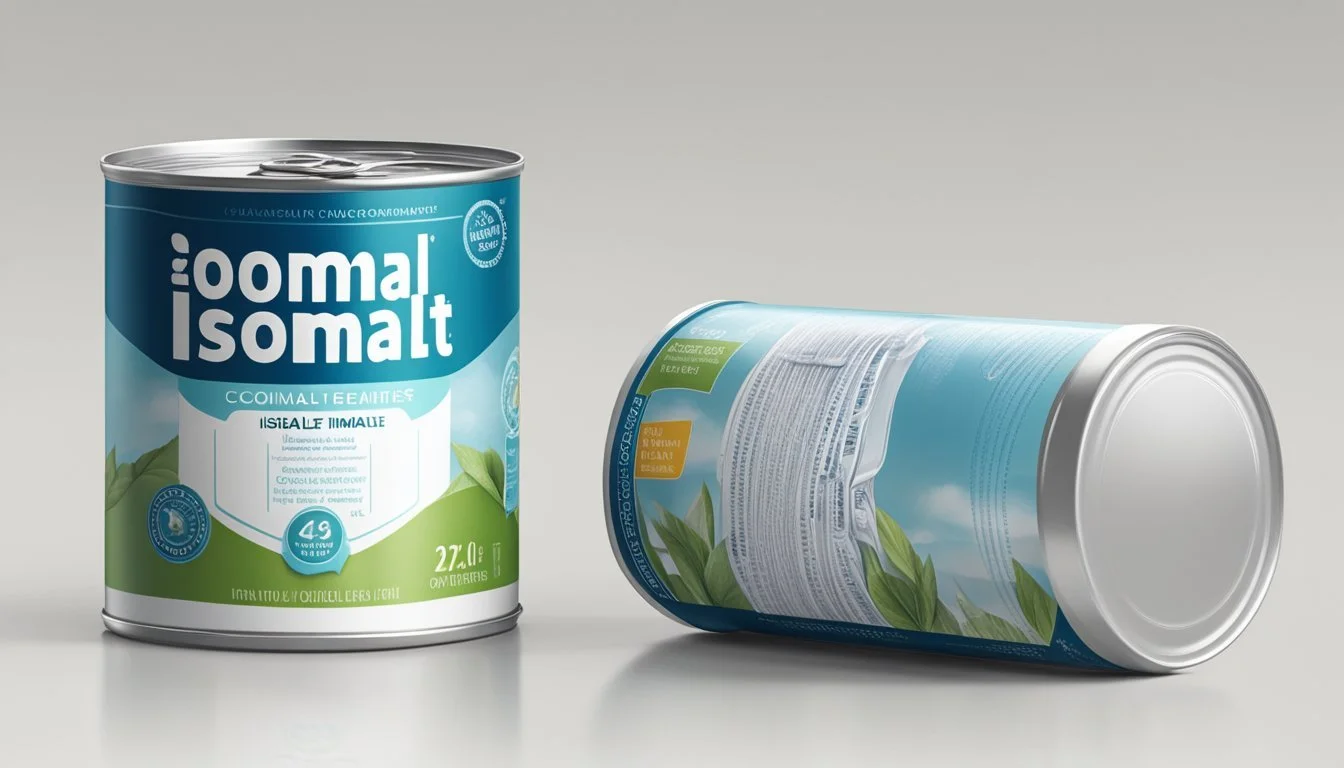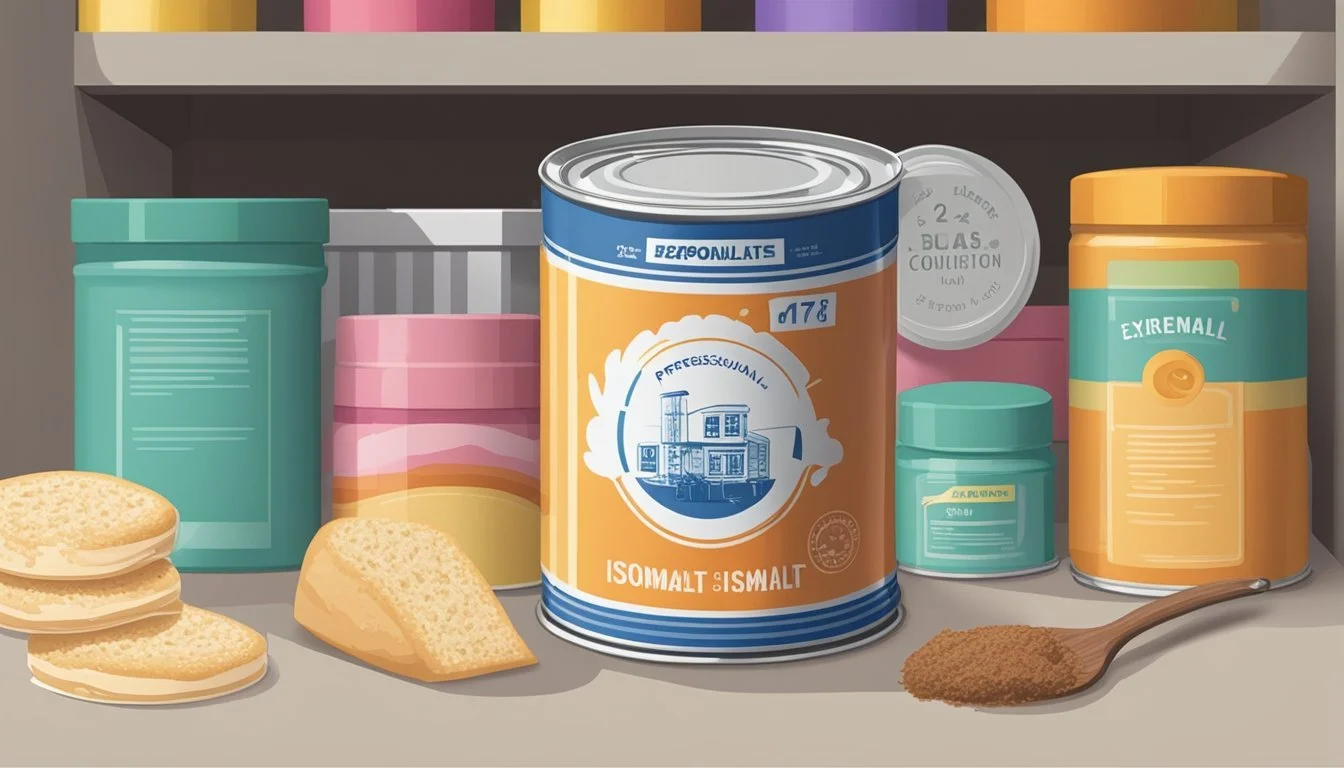How Long Does Canned Isomalt Last?
Understanding Shelf Life and Storage Tips
Isomalt, a sugar substitute often used in baking and sugar art, offers a longer shelf life compared to regular sugar when stored properly. Canned isomalt typically can retain its quality for up to two years if the container is sealed well. This impressive longevity is due to its stable chemical structure which resists humidity and prevents the isomalt from clumping together or becoming sticky, common issues with regular sugar.
The shelf life of canned isomalt is especially important for bakers and confectioners who value its clear, glass-like appearance for decorative purposes. To ensure its durability, isomalt should be kept in an airtight container in a cool, dry place. The presence of a desiccant, like a silica gel packet, will help in absorbing any moisture and further extend its usable period.
While isomalt is relatively hygroscopic, which means it can attract and absorb water from the environment, proper storage is key to maintaining its form and usability. The canning process, where isomalt is sealed in an air-tight environment, plays a significant role in preserving its quality over time. This, combined with isomalt's resistance to crystallization and inherent stability, makes it a reliable choice for culinary artists looking to prepare and preserve their creations with a touch of sweetness and structural integrity.
Understanding Isomalt
Isomalt is an essential ingredient in the creation of sugar art, providing an alternative to regular sugar with unique properties suitable for decorative pieces.
Characteristics of Isomalt
Isomalt is a sugar substitute made from beet sugar and stands out for its physical properties that are akin to real sugar. It is non-hygroscopic, meaning that it does not absorb moisture easily, which is a beneficial trait when creating sugar pieces meant to last. A key feature that makes isomalt favored among sugar artists and pastry chefs is its high resistance to crystallization, ensuring clarity and stability in finished sugar art.
Temperature Stability: Isomalt has a high melting point, making it adaptable for various sugar art techniques such as casting, pulling, and blowing.
Edibility: It is edible with a lower calorie content compared to regular sugar.
Shelf Life: When stored properly, isomalt decorations can last a long time, maintaining their structural integrity and appearance.
Usage: Isomalt can be used in baking and decorating, and it's a popular choice for creating clear, glass-like decorations and structures.
Isomalt vs. Regular Sugar
Isomalt boasts several advantages over regular sugar, especially in the context of sugar art and for those looking for sugar alternatives.
Feature Isomalt Regular Sugar Caloric Value Lower calorie content Higher calorie content Hygroscopicity Non-hygroscopic (low moisture absorption) Hygroscopic (absorbs moisture) Crystallization Resistant to crystallization Prone to crystallization Suitability Ideal for sugar art Less ideal for detailed sugar art Glycemic Index Lower glycemic index Higher glycemic index
While regular sugar is the traditional choice for sweetness in confectionery, isomalt serves as an effective alternative for those needing a more stable and low-glycemic option, making it suitable for weight loss and diabetic-friendly foods. The low hygroscopic nature of isomalt prolongs the lifespan of sugar decorations by preventing them from getting sticky and losing their shape, a common issue with regular sugar in high humidity environments.
Storage Fundamentals
Canned isomalt longevity heavily depends on implementing proper storage techniques. By maintaining optimal conditions and using airtight containers, one can significantly prolong the shelf life and preserve the quality of isomalt.
Optimal Storage Conditions
Storing isomalt in an environment that minimizes humidity is crucial. Humidity is the primary concern as it leads to isomalt absorbing moisture, which might compromise its structure. The presence of moisture can render isomalt sticky and hygroscopic, leading to clumping or even melting. To combat this, the inclusion of silica gel packets in the storage area can help maintain a dry atmosphere by absorbing excess moisture. Additionally, storing isomalt at a consistent temperature away from direct sunlight contributes to its stability.
Importance of Airtight Containers
When preserving isomalt, airtight containers are essential for maintaining its integrity. These containers prevent the incursion of moisture and other contaminants. Utilizing an airtight container not only protects isomalt from humidity but also ensures that it does not absorb any odors, which can alter its taste and purity. The ideal practice is to check the seal of the container and confirm that it is secure before the storage of isomalt.
Shelf Life and Quality Indicators
The lifespan and integrity of canned isomalt are essential to consumers seeking long-term sweetness without compromise. These factors are influenced by storage conditions, packaging integrity, and the nature of isomalt itself.
Shelf-Life Estimation
Isomalt, due to its stable sugar alcohol structure, typically has a prolonged shelf life compared to other sugar products. When canned, one can expect isomalt to remain fresh for an estimated 2-5 years post-manufacture, provided that the can's integrity isn't compromised and storage conditions are optimal.
Optimal Conditions:
Temperature: 50-70°F (10-21°C)
Environment: Cool, dark, and dry
These conditions help maintain the product's quality and taste by mitigating the risks of heat damage and moisture that could lead to spoilage.
Signs of Degradation
The quality indicators of canned isomalt are visible and can be detected through a sensorial assessment:
Color: Any noticeable discoloration may indicate degradation.
Consistency: It should remain consistent; any changes could signify spoilage.
Taste: An off-taste is a clear sign that the isomalt is no longer in its prime condition.
Expiration Dates must be respected, but canned isomalt can maintain its quality beyond these dates if stored correctly. Consumers should be cautious and discard any canned isomalt if the integrity of the can is compromised, which includes signs such as bulging, leakage, or rust.
Safety Considerations
In discussing the longevity of canned isomalt, safety is paramount. One must consider not just the shelf life, but also the potential risks during handling and preparation as well as the implications for food safety. Proper techniques and precautionary measures are necessary to minimize harm and ensure quality.
Food Safety Concerns
Canned isomalt enjoys a considerable shelf life. When stored properly, cooked isomalt can last up to two years. However, it is critical that the container remains well-sealed to prevent the introduction of bacteria which could lead to food safety issues such as the development of botulism. This toxin is extremely dangerous and can occur in improperly stored food items.
Proper Sealing: Ensure containers are air-tight.
Moisture Control: Utilize silica gel packets to manage humidity.
Visual Checks: Regularly inspect for signs of spoilage or contamination.
Handling and Preparation Safety
When working with isomalt, especially in its melted state, one faces risks due to the high temperatures required for preparation. Safety gloves are crucial as isomalt can reach temperatures between 320-360°F and can cause severe burns if it comes into contact with skin.
Protective Gear:
Always wear heavy-duty rubber gloves.
Use appropriate tools to handle hot isomalt.
Cooling Process:
Allow isomalt to cool on a silicone mat before handling.
Never rush the cooling by using water or wet surfaces which can cause splattering.
Adhering to these guidelines ensures one can safely enjoy the benefits of isomalt in various culinary applications.
Usage in Culinary Arts
Isomalt is a versatile ingredient commonly used by pastry chefs and cake decorators. It is prized for its stability and clarity, which is essential for creating intricate culinary pieces.
Applications in Pastry Making
Pastry chefs leverage isomalt's unique properties in various applications. It can be used as an ingredient in recipes requiring sugar, where it contributes a lower glycemic alternative. In pastry making, it finds its niche in preparations requiring high heat without crystallization. Isomalt's strength lies in its resistance to humidity and its ability to retain its shape, sheen, and texture, making it ideal for detailed work in pastries.
Blown Sugar: Similar to glass blowing, blown sugar techniques are employed to create delicate and artistic shapes.
Edible Glitter: Isomalt can be made into edible glitter, adding a sparkle to desserts without affecting flavor.
Cast Sugar: It is perfect for casting sugar, as it sets clear, allowing for inclusion of coloring agents without losing translucency.
Creative Decorations and Art
The realm of creative decorations and art within culinary arts heavily relies on isomalt for its clarity and malleability. Cake decorators often use isomalt for:
Decorations: It can be pulled, sculpted, or blown to form glass-like structures that can be colored for a diverse range of embellishments.
Sugar Lace: Detailed lace patterns can be crafted from isomalt for intricate cake detailing.
Preservation: Unlike regular sugar, isomalt decorations are more resilient to moisture and less likely to become sticky, allowing them to last longer on display.
Technical Tips for Isomalt
Isomalt requires precision and care in both the cooking and shaping stages. The following tips aim to ensure that the final product meets quality expectations, remains clear, and has the desired consistency and shape.
Cooking Process and Techniques
When cooking isomalt, one must ensure that the temperature is accurately monitored using a candy thermometer. Isomalt should be heated to precisely 338°F (170°C) for it to reach the proper consistency. Overheating may cause discoloration, while insufficient heat may not allow the isomalt to melt completely, resulting in a grainy texture. It is advisable to cook isomalt in a microwave for controlled heating, allowing it to dissolve evenly and to avoid the introduction of unwanted bubbles. Isomalt should be melted to a clear, bubble-free liquid to form the ideal base for candy or decorative pieces.
Molding and Shaping Isomalt
Once isomalt is properly cooked, the molding and shaping process begins. Pouring it onto a silicone mat is generally recommended as they are non-stick and can withstand the high temperatures. When creating pieces such as bubbles, working quickly is essential, as isomalt hardens rapidly at room temperature. Silicone or metal molds may be used to form various shapes. To prevent fingerprints and retain a glossy finish, handle isomalt with gloves. If isomalt needs to be reworked, it can be gently reheated until pliable.
Advanced Isomalt Handling
When working with isomalt, precision in handling colors and flavors is crucial for creating stunning decorations that last. It's important to understand the nuanced techniques for incorporating additives that enhance the visual appeal without compromising the structure and clarity of isomalt creations.
Working with Colors and Flavors
To achieve vibrant results when adding food coloring to isomalt, it's recommended to use powder or gel forms, as these have minimal impact on the isomalt's consistency. Start with a small amount, as isomalt can take color intensely:
Powder: Dust a tiny amount onto the isomalt and blend thoroughly.
Gel: A pinpoint on a toothpick can be swirled into melted isomalt for even distribution.
Incorporating flavoring into isomalt requires a careful approach. Flavors should be oil-based or specifically formulated for high temperatures to avoid evaporation or burning off during the melting process. The additions should be made after the isomalt has been cooked and slightly cooled.
For airbrushing, use an airbrush machine with liquid food coloring to apply a thin, even layer of color onto set isomalt decorations. Hold the airbrush at a distance to prevent moisture build-up which can make the isomalt sticky.
Creation of Isomalt Decorations
The process of crafting isomalt creations involves patience and timing. Here’s a brief guide on how to manage the workflow:
Melt the isomalt to the appropriate temperature, usually around 338°F (170°C).
Pour onto a silicone mat to prevent sticking and let it cool until it’s pliable.
Begin shaping your decorations, using molds or free-hand techniques for varying effects.
For decorations that require attaching to cakes or other edible pieces, ensure that they are completely free from moisture. This can be done by storing them with silica gel. When ready to attach, use isomalt itself as an adhesive by applying it in a molten state to create a strong bond.
To create detailed and delicate designs, tools such as silicone molds and sculpting implements are invaluable. With attention to detail, one can create a wide range of smooth, crystal-like structures that have a glassy appearance and maintain their integrity over time.
Frequently Asked Questions
In this section, readers will find answers to common queries regarding the durability and storage of canned isomalt, ensuring a clear understanding of how to maintain its quality over time.
Common Queries About Isomalt
How long does canned isomalt last when properly stored? Canned isomalt, when kept in a cool, dry pantry and away from direct light, can last up to two years. The product's longevity is due to isomalt's inherent resistance to humidity and crystallization, compared to regular sugar.
Is refrigeration required for extended storage of isomalt? Refrigeration is not typically necessary for isomalt storage. Instead, it should be kept in airtight containers with silica gel packets to absorb any moisture, which can be particularly helpful in high-humidity environments.
Can isomalt be reheated for use after storage? Yes, isomalt can be reheated in a microwave or on a stovetop. For microwave reheating, it should be done in a microwave-safe container at short intervals, ensuring it melts evenly without burning.
Are there any specific tutorials for working with stored isomalt? Numerous tutorials are available online that detail the manipulation of isomalt, including melting, coloring, and molding. They provide crucial information about safely reheating and working with stored isomalt to maintain its quality for decorative and culinary uses.
Additional Considerations
When considering the longevity of canned isomalt, the environment and storage methods are pivotal to maintaining its quality and shelf-life.
Isomalt in Various Climates
Isomalt's stability is highly dependent on the climate in which it is stored. In high-temperature environments, isomalt can become sticky and may degrade faster. Conversely, isomalt stored in cool and dry conditions tends to preserve its quality longer. Moisture is particularly detrimental as it can lead to a breakdown of the isomalt structure, reducing its shelf-life.
Hot & Humid Climates: Store in an air-conditioned space to mitigate stickiness and prevent moisture build-up.
Cool & Dry Climates: A pantry or cupboard away from heat sources is ideal for longevity.
Long-Term Storage and Preservation
Proper storage techniques are essential for extending the shelf-life of canned isomalt and maintaining its freshness. The key is to keep isomalt in an environment with controlled humidity and temperature, away from direct light and heat sources.
Pantry Storage: Ensure the pantry is cool and has low humidity levels. A silica gel packet can help absorb any excess moisture.
Fridge Storage: Not typically recommended unless the climate is very humid; store in an airtight container to prevent absorption of other odors and flavors.
Shelf-Life: Canned isomalt, when stored correctly, can last up to two years.
Utilizing airtight containers and including desiccants like silica gel packets can greatly contribute to the preservation of isomalt's structure and quality. It is recommended to check on the isomalt periodically to ensure that it remains dry and free from contamination.
Appendix: Related Topics
The appendix dives into the specifics surrounding ingredients akin to isomalt, its alternatives, and the science behind the preservation of canned goods.
Related Ingredients and Alternatives
Isomalt is a sugar substitute often used in sugar art because it is less hygroscopic, meaning it doesn't absorb moisture as easily as regular sugar. This makes it ideal for creating decorative sugar pieces that last longer.
Related Ingredients: Traditional ingredients like beets and corn may serve as sources for other types of sugar but react differently when used in creating sugar art or as preservatives.
Alternatives: The functionality of isomalt in artistry can also be mimicked with special blends of sugar, corn syrup, or other stabilizing agents.
Understanding Canned Goods Preservation
The longevity of canned goods is determined by several factors, including the acidity of the contents.
High-Acid Foods: Foods like tomatoes and fruits—high in acid—can naturally last up to 18 months when home canned, due to the acidic environment inhibiting bacterial growth.
Low-Acid Foods: Protein-rich foods such as tuna or vegetables that are low in acid require more precise canning techniques to ensure longevity.
Home Canning is about creating an airtight environment where bacteria cannot thrive, preserving the food.
Preservation Techniques: Home canned goods utilize a variety of techniques such as water-bath canning for high-acid foods and pressure canning for low-acid foods.
Safety Practices: It's crucial to follow proper safety practices to prevent contamination and spoilage.
By understanding the alternatives to isomalt and the essentials of canning, one can better appreciate the craft of edible art and the science of food preservation.
Conclusion
The longevity of canned Isomalt is notable due to its stability as a sugar alcohol. When stored correctly, Isomalt can maintain its quality for an extend period, with a shelf life that reaches up to two years.
Several key factors contribute to preserving the quality of Isomalt:
Sealed Containers: It should be kept in air-tight containers to prevent exposure to humidity and moisture.
Silica Gel Packs: Including silica gel packets assists in absorbing any excess moisture.
Cool, Dry Places: Storage in cool and dry environments helps in maintaining its structure and usability.
The preservation of Isomalt’s quality over time allows it to be a reliable ingredient in culinary applications, particularly in the creation of edible art where clarity and structural integrity are paramount.
For best results, users should adhere to the following guidelines:
Wrap unused portions in plastic wrap.
Use microwave-safe containers with tight-fitting lids for storage.
Check for any changes in color or texture, which may indicate compromised quality.
By following these storage practices, individuals and professionals alike can ensure that they make the most of Isomalt's extended shelf life, harnessing its optimal quality when needed.


